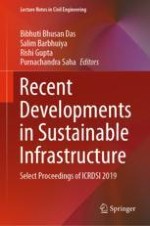2021 | OriginalPaper | Chapter
A Review: Effect of Turbidity Current on the Reservoir Sedimentation
Authors : Bidisha Byabartta, Tanmoy Majumder, Paromita Chakraborty, Jyotiprakash Padhi, Bitanjaya Das
Published in: Recent Developments in Sustainable Infrastructure
Publisher: Springer Singapore
Activate our intelligent search to find suitable subject content or patents.
Select sections of text to find matching patents with Artificial Intelligence. powered by
Select sections of text to find additional relevant content using AI-assisted search. powered by
